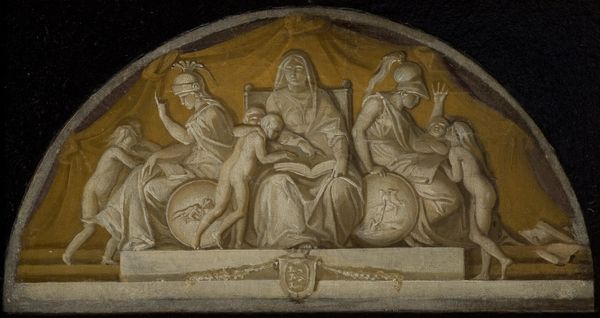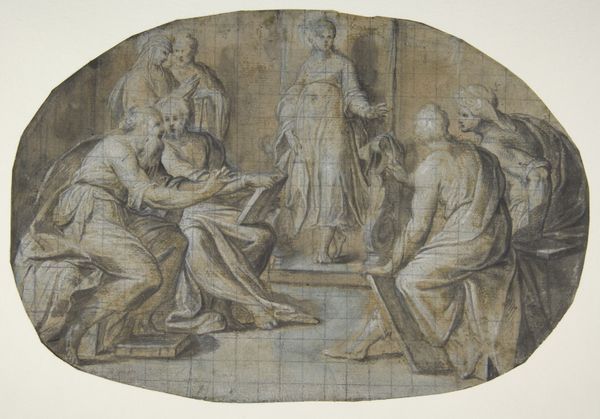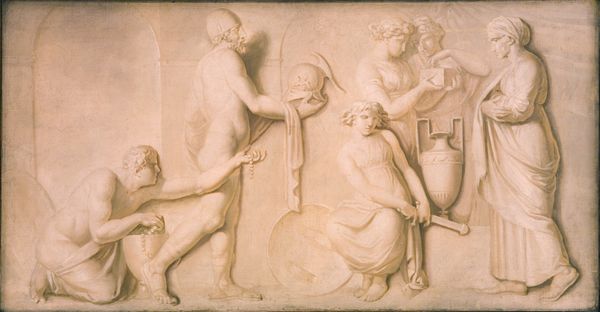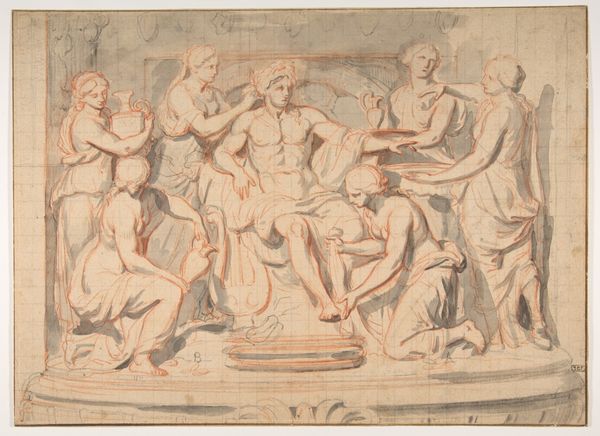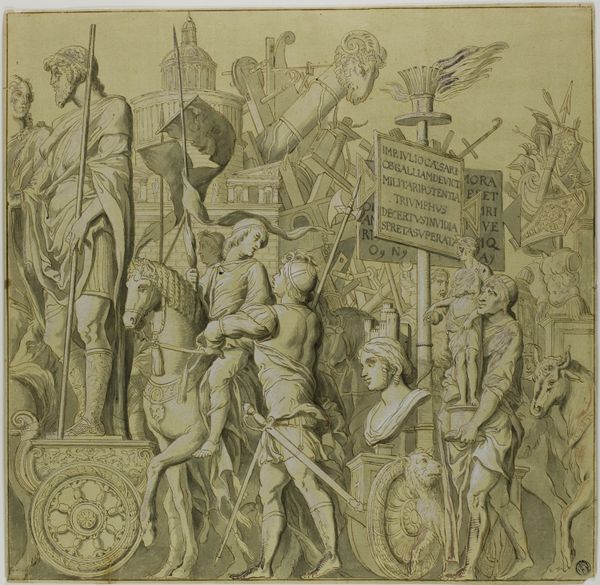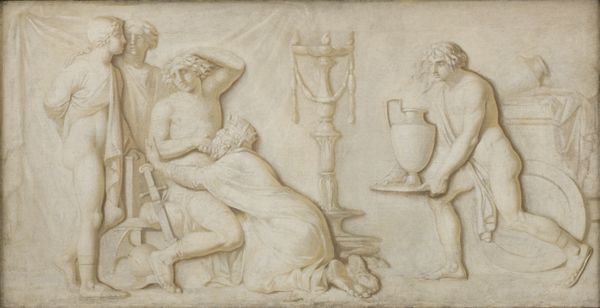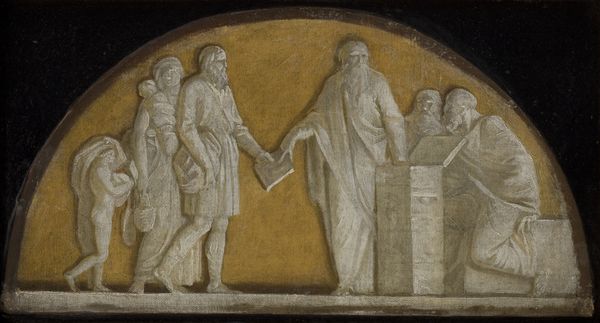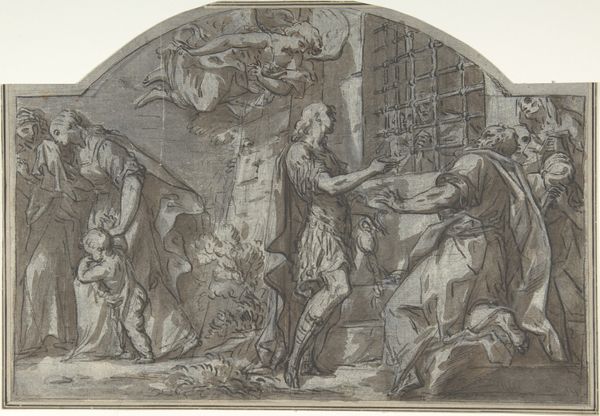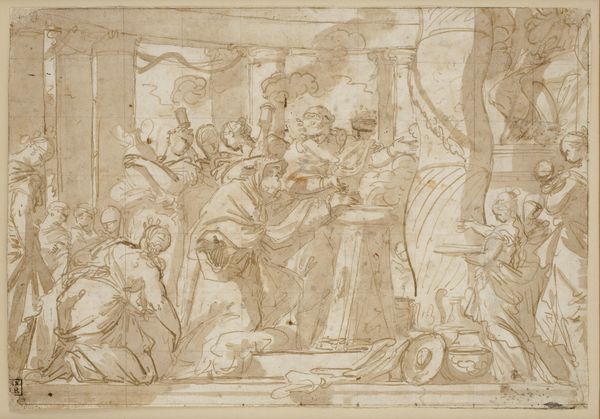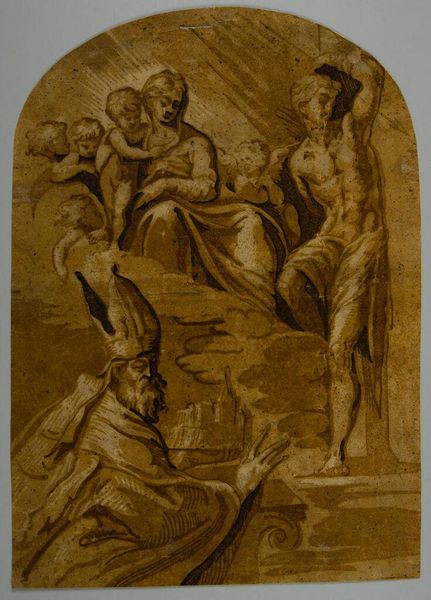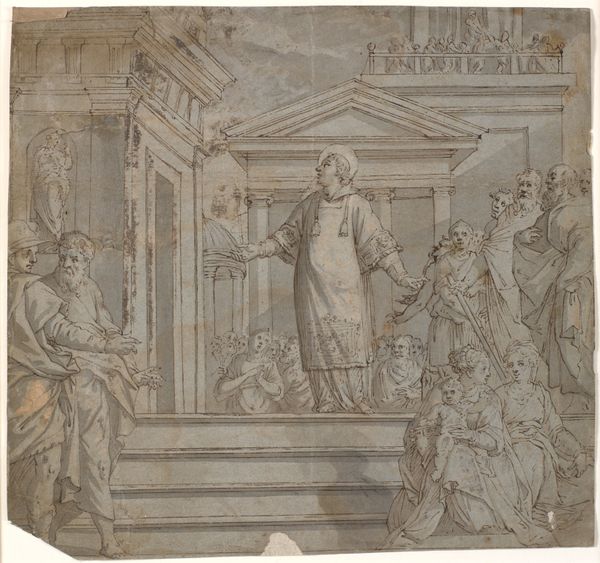
relief, sculpture
#
neoclacissism
#
sculpture
#
relief
#
figuration
#
sculpture
#
history-painting
#
academic-art
#
statue
Dimensions: 22.5 cm (height) x 41 cm (width) (Netto)
Editor: Here we have Nicolai Abildgaard’s “Asiatic Trade,” a relief sculpture made between 1780 and 1784. It strikes me as rather formal, almost staged. What kind of narrative do you see playing out here? Curator: This relief offers a window into the complex relationship between Europe and Asia during the late 18th century, particularly concerning trade and colonialism. Look at the figures; who is being centered, and how are their roles depicted? Editor: I notice the European figure is quite prominent, seemingly mediating between the other figures and the ship. Is that typical of neoclassical art to highlight Europeans that way? Curator: Precisely. Neoclassicism, while drawing from classical ideals of harmony and balance, also served as a vehicle for projecting power. Consider the "Asiatic" figures, their postures, and expressions. What do they tell us about the European perception of the East during that time? Editor: There’s a passivity in their gestures, a willingness to engage with the trade perhaps, or perhaps even being exploited. Curator: Exactly. The composition reinforces a power dynamic inherent in colonial trade relationships. Abildgaard, consciously or unconsciously, participates in a discourse where Europe is the active agent of "civilization" and economic exchange, and "Asia" is a more passive recipient. Editor: It’s unsettling to realize this beautiful piece has such an unbalanced viewpoint encoded in it. How do we engage with it responsibly now? Curator: By acknowledging the inherent biases, examining the historical context, and questioning the narratives perpetuated by such artworks. Only through critical engagement can we unpack the layers of meaning and challenge the dominance of a Eurocentric perspective. Editor: Thank you for opening my eyes to the complexities embedded within this piece. It really shows how crucial it is to view art through a critical and historical lens. Curator: Indeed. Art can reflect power structures, and analyzing it helps us understand and perhaps challenge those structures today.
Comments
No comments
Be the first to comment and join the conversation on the ultimate creative platform.

